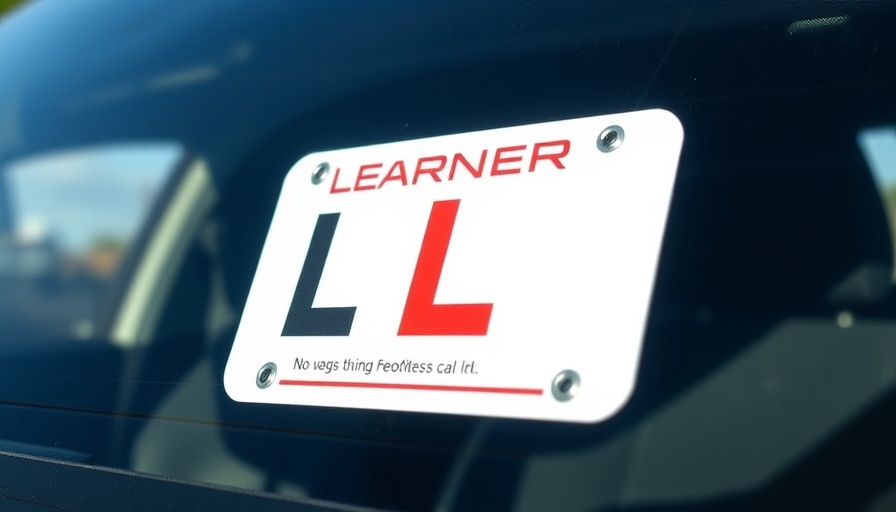
What the Big “L” Means for New Drivers
Learning to drive is not just a step towards independence; it's also a journey filled with excitement and nervousness. Across the globe, many countries have implemented a system to assist novice drivers by introducing learner plates, commonly referred to as “L plates.” These bright indicators serve a critical purpose: they signal to other road users that the driver is still in the learning phase. The visibility of L plates prompts seasoned drivers to exercise patience and caution when navigating around a learner.
Where Are L Plates Commonly Used?
The concept of L plates is most recognized in the United Kingdom, where it is a legal requirement for learner drivers to display them prominently on the front and back of their vehicles. Australia also uses L plates, although the design may differ depending on the state; some feature the classic red and white, while others use yellow and black. New Zealand takes this further by insisting that learner drivers not only display the plates but also be accompanied by a fully licensed driver at all times. Meanwhile, many regions in India enforce similar regulations.
In contrast, the approach is different in North America. In the United States and Canada, learner drivers typically display their status through specific licensing types rather than physical L plates. However, many opt for a “Student Driver” sticker as a courtesy to other vehicles on the road. This indicates their status and encourages other drivers to offer additional support.
The Responsibilities of Learner Drivers
While it’s understood that learner drivers are still acquiring the skills needed to navigate the roads, they are expected to adhere to the same traffic laws as all drivers. However, they typically face additional restrictions aimed at easing the transition into full driving privileges. These measures often require learner drivers to be supervised by a fully licensed adult, helping them to practice safely.
Why L Plates Matter for Road Safety
The introduction of L plates represents more than just a requirement; it embodies a broader commitment to road safety. By signaling to other drivers that someone is learning, it fosters an environment of understanding and caution. This not only protects the learner but also encourages responsible driving habits among seasoned drivers. Awareness that someone is still gaining their skills creates a communal atmosphere of patience on the road.
The Journey Ahead: What Comes After the L Plate?
Following the learner stage, many countries have structured systems for novice drivers, transitioning them to “N plates,” as seen in Ireland. This progression indicates that while they may have passed basic driving tests, they are still in a phase of learning and adapting to the road. Understanding the dynamics of these systems can empower drivers to respect the learning process while fostering mentorship for new drivers through their own driving experiences.
So, the next time you spot an L plate on a vehicle, remember that it signifies growth and learning, not just for the driver, but for everyone on the road. A little patience can go a long way in helping new drivers gain the confidence they need to excel.
 Add Row
Add Row  Add Element
Add Element 


 Add Row
Add Row  Add
Add 

Write A Comment